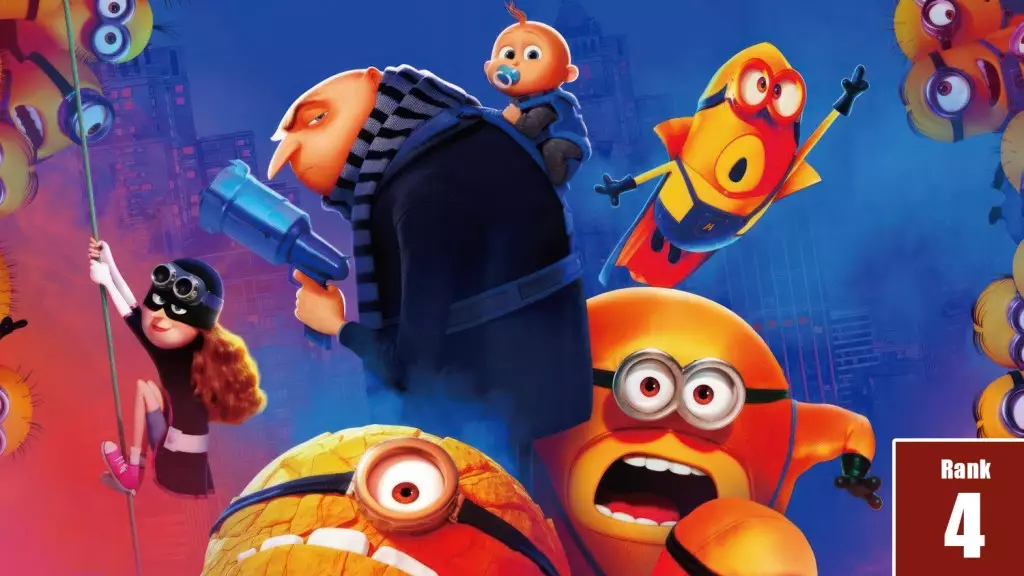The animation sector is experiencing a significant transformation, particularly illustrated by the resounding success of “Despicable Me 4.” This film exists at the confluence of traditional cinema and evolving streaming paradigms, where box office figures are only one part of the equation. “Despicable Me 4” has not merely capitalized on its successful predecessors; it has adeptly navigated the unpredictable waters of contemporary film economics, showcasing the importance of an integrated revenue strategy that transcends the silver screen.
The Financial Landscape: More Than Just Box Office Numbers
As movie studios increasingly understand, financial success in the cinematic landscape is multi-faceted. The traditional metrics that once governed success are now supplemented by downstream revenues, including merchandising, streaming deals, and international releases. For instance, Universal’s release strategy for “Despicable Me 4” illustrates how studios can effectively utilize pop culture marketing to drive engagement across diverse platforms. By creating a global marketing campaign that included a staggering $170 million expenditure—spanning events like the Super Bowl, the Kentucky Derby, and even the French Open—Universal ensured the film was not just a first-day box office wonder but a lasting cultural phenomenon.
The Power of Character Connection
At the heart of “Despicable Me 4” lies its rich tapestry of characters, allowing for a compelling narrative that resonates with audiences of all ages. The addition of Gru’s antagonist Maxime Le Mal, coupled with the introduction of baby Gru Jr., adds an enticing layer of complexity. The film’s humor and adventure continue to charm fans due to its well-established character dynamics, brilliantly voiced by actors like Steve Carell and Will Ferrell. Moreover, the film explores important themes, such as familial bonds and self-acceptance, which resonate particularly well in today’s socio-cultural climate.
Strategic Marketing Innovations
Universal’s marketing genius is not solely evident in their expenditure but rather in their innovation. Collaborations with various influencers and integrations into pop culture—like NBA player Nikola Jokić’s viral Gru-inspired outfit—helped propel the film’s visibility. By ingeniously tapping into trending topics and current events, Universal effectively harnessed the power of social media to create a buzz that reverberated across digital platforms. The campaign even included partnerships with Funko and BTS pop-up stores in major cities, building a multi-faceted approach that transformed “Despicable Me 4” into a pop-culture touchstone, not just another animated film.
Financial Success Reiterated
The financial figures speak for themselves. “Despicable Me 4” grossed a staggering $775 million worldwide against a total budget of $405 million, which includes production costs and marketing. The net profit of $370 million is a testament to the productive synergy achieved between a beloved franchise and the innovative strategies of Universal and Illumination. This success is indicative of a broader trend in animated films that underscores a sustainable business model, where a balance between expenses and extensive global outreach can yield remarkable returns.
The Game-Changing Role of Streaming Services
While Universal’s successes are rooted in theatrical releases and marketing brilliance, the landscape includes the growing influence of streaming platforms. Though Apple and Amazon are excluded from traditional assessments due to differing revenue evaluation metrics, their involvement in theatrical releases emphasizes the shifting paradigms of profitability. This means that successful franchises like “Despicable Me” face unique pressures and opportunities as they venture into both theatrical releases and the streaming world. The full scope of their success is contingent on the adaptability of studios to navigate this evolving industry landscape.
The Future of Animated Films
The vital success of “Despicable Me 4” signals a positive trajectory for animated films, suggesting that they can continue not only as entertaining family fare but as significant financial assets for studios. As studios refine their approach to storytelling, character development, and marketing strategies, they can ensure that animated features maintain their relevance in an increasingly competitive market. The film stands as a benchmark for how animation can evolve, reflecting societal values while entertaining audiences, paving the way for future innovations that will redefine what audiences expect from animated cinema.

